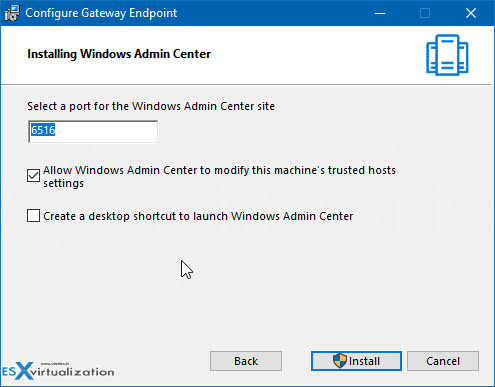
When prompted, sign in by using the CONTOSO\Administrator username and Pa55w.rd password.

If this occurs, restart SEA-ADM1 to correct the issue. Note: After installation completes, you may encounter the error message ‘ERR_Connection_Refused’. Note: Wait until the installation completes. On SEA-ADM1, start Windows PowerShell as Administrator.įrom the Windows PowerShell console, run the following command to download the latest version of Windows Admin Center: Start-BitsTransfer -Source -Destination "$env:USERPROFILE\Downloads\WindowsAdminCenter.msi"Įnter the following command and then press Enter to install Windows Admin Center: Start-Process msiexec.exe -Wait -ArgumentList "/i $env:USERPROFILE\Downloads\WindowsAdminCenter.msi /qn /L*v log.txt REGISTRY_REDIRECT_PORT_80=1 SME_PORT=443 SSL_CERTIFICATE_OPTION=generate".Administer servers with Remote PowerShell.Configure Windows Admin Center extensions.The main tasks for this exercise are as follows: Now that you have deployed the Server Core servers, you need to implement Windows Admin Center for remote administration. Exercise 1: Implementing and using remote server administration Scenario Note: AZ-800T00A-SEA-DC1 and AZ-800T00A-SEA-ADM1 virtual machines are hosting the installation of SEA-DC1 and SEA-ADM1.įor this lab, you’ll use the available VM environment and an Azure AD tenant. Other VMs can be running, but they aren’t required for this lab. Virtual machines: AZ-800T00A-SEA-DC1 and AZ-800T00A-ADM1 must be running. Implement and configure Windows Admin Center.You may find slight differences between the interactive simulation and the hosted lab, but the core concepts and ideas being demonstrated are the same. Note: An interactive lab simulation is available that allows you to click through this lab at your own pace. They also want to implement Windows Admin Center for remote management of both these servers and other servers in the organization.


wants to implement several new servers in their environment, and they have decided to use Server Core.


 0 kommentar(er)
0 kommentar(er)
